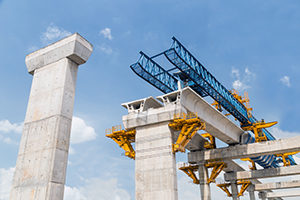
Many large infrastructure projects underline the complex relationship between physical structures and human resources. Such infrastructure projects would not be effective without proper operation and maintenance, and economic activities would be unsustainable without efficient infrastructure. The transport sector is an important component of any economy, and it is a crucial input for development. This is especially so in a globalized economy, where economic opportunities are increasingly related to the efficient mobility of people, goods, and information.
The International Conference on Transportation Infrastructure Projects took place during 7—10 January 2019 and was hosted by the Indian Institute of Technology, Roorkee, at Roorkee Campus, Uttarakhand. It brought together over 300 participants from industry and academia involved in the transport sector. The conference comprised sessions in which researchers, practitioners, engineers from project implementation units, policy makers, and students contributed their insights on planning, constructing, and operating transportation infrastructure. The topics discussed included pavement materials, the design of bituminous and concrete mixes, traffic engineering, transportation planning, design safety, safety issues in projects, transportation economics, and sustainable transportation.
The plenary session on 10 January focused on policy options for financing transport projects. Speakers unanimously stressed the importance of improving asset creation and asset management efficiency and creating legally tenable concession agreements and regulatory and dispute resolution frameworks. Innovative suggestions included awarding projects based on the competence of the planners, designers, and executers and not on a least-cost selection process; grouping projects of national importance and high quality and awarding them based on quality-based selection or quality-cost-based selection; and incorporating regenerative, transformative, relocation, and structural changes into the cost-benefit analysis prior to making the final decision to finance projects.
In this context, at the plenary session, ADBI Dean Naoyuki Yoshino highlighted the potential spillover effects from large infrastructure projects. Citing empirical work on projects in Japan, the Philippines, and Uzbekistan, he noted that in order to attract private finance into infrastructure, the rate of return has to be increased. He stated, “Traditionally, user charges were the only source of infrastructure investment, and these created a very low rate of return. Private investors could not receive sufficient returns, which made them reluctant to invest in infrastructure projects.” He also suggested linking the investment “with employment generation and private investment to bring in economic efficiency in the area or the region.”
Dean Yoshino shared estimates of the incremental revenues of infrastructure projects emerging from the economic effects in the region surrounding a project. He proposed an innovative solution: “Part of the increased tax revenue, for example 50%, could be returned to the investors of the infrastructure, which would increase their revenue. The return on the 50% increased tax revenue could be passed on to infrastructure investors in the form of subsidies.”
The conference concluded with a recommendation to authorities and governments to create a pool of transport infrastructure professionals who can deliver not only within countries but also globally. Innovations and technology-driven, sustainable solutions will only be possible if human resources for transport infrastructure are developed.








Comments are closed.